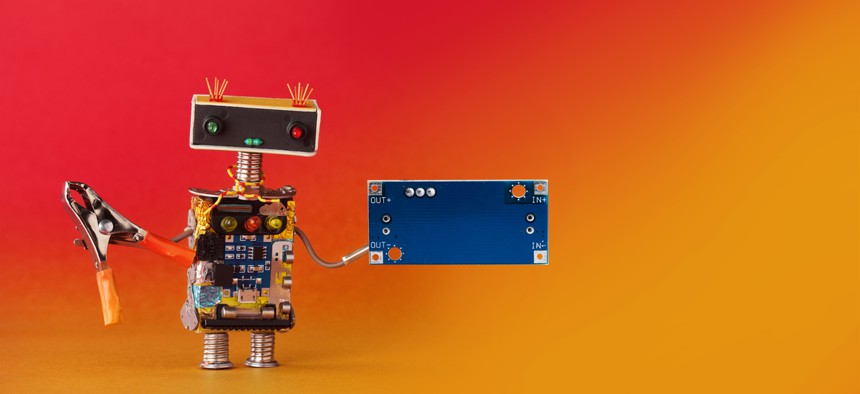The Pentagon's Research Arm Wants AI to Help Design More Secure Tech

Besjunior/Shutterstock
The “AI co-designers” would help the Pentagon rapidly blueprint secure weapons, vehicles and other network-connected platforms, and suggest designs humans haven’t yet conceived.
The Pentagon is exploring how artificial intelligence can help build more digitally secure vehicles, weapons systems and other network-connected platforms in a fraction of the time it takes today.
For years, cyber experts have urged agencies to make security a priority when building new systems, but that’s easier said than done, at least when it comes to military tech, according to the Defense Advanced Research Projects Agency.
Virtually every piece of military hardware includes a digital component and understanding how adversaries might attack these so-called “cyber physical systems” before they’re constructed requires a lot of manpower and computer modeling. Because the Defense Department works under tight deadlines, officials often limit the number of designs they consider, potentially passing up more effective but out-of-the-box options, according to DARPA.
But using artificial intelligence, the Pentagon could significantly accelerate the construction of cyber physical systems while also unlocking more effective—and yet unimagined—designs, the agency said.
On Tuesday, the agency kicked off a research initiative that will focus on building AI-powered tools that help the Pentagon rapidly assess different blueprints for cyber physical systems. According to DARPA, the tech developed under the Symbiotic Design for Cyber Physical Systems program would “be a game changer, and may result in a new generation of unexpected, counterintuitive design solutions.”
As it stands, the process for building cyber physical systems is decentralized, iterative and resource-intensive, officials said. Different teams design different parts of the system, and errors frequently arise as those components are pieced together, forcing the department to go back to the drawing board.
But with “AI co-designers,” the process would change dramatically: Humans would feed both project requirements and preliminary blueprints into the tech, and the tools would propose different designs for individual components of the system. Officials would then work with the machine to narrow down possible designs, and the system would test different component combinations to find the most effective overall system.
While today the Pentagon must constantly address vulnerabilities as they arise, using AI, officials would start building cyber physical systems with a blueprint that’s already been thoroughly tested and optimized.
“We expect order of magnitude improvement in design productivity, but equally important, the appearance of surprises, in the discovery of unconventional but highly performant designs,” officials said.
DARPA plans to divide the program into three tracks, with teams working together to design the AI co-designer itself, develop a way for humans to interact with the system and build a training regimen to teach the AI to learn from the successes and failures of previous system design.
The program is expected to run for about four years, and interested vendors must submit their final proposals by Oct. 14.






